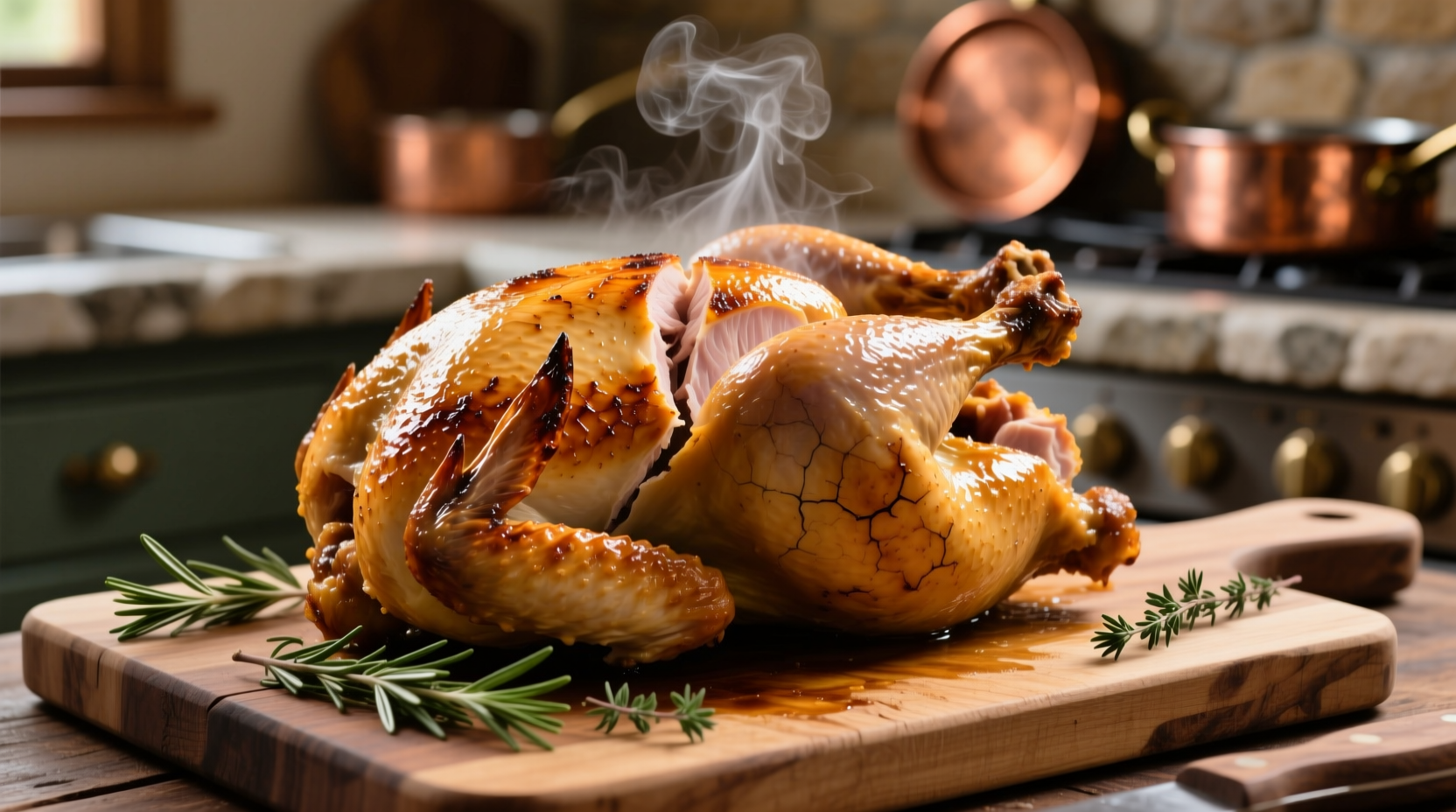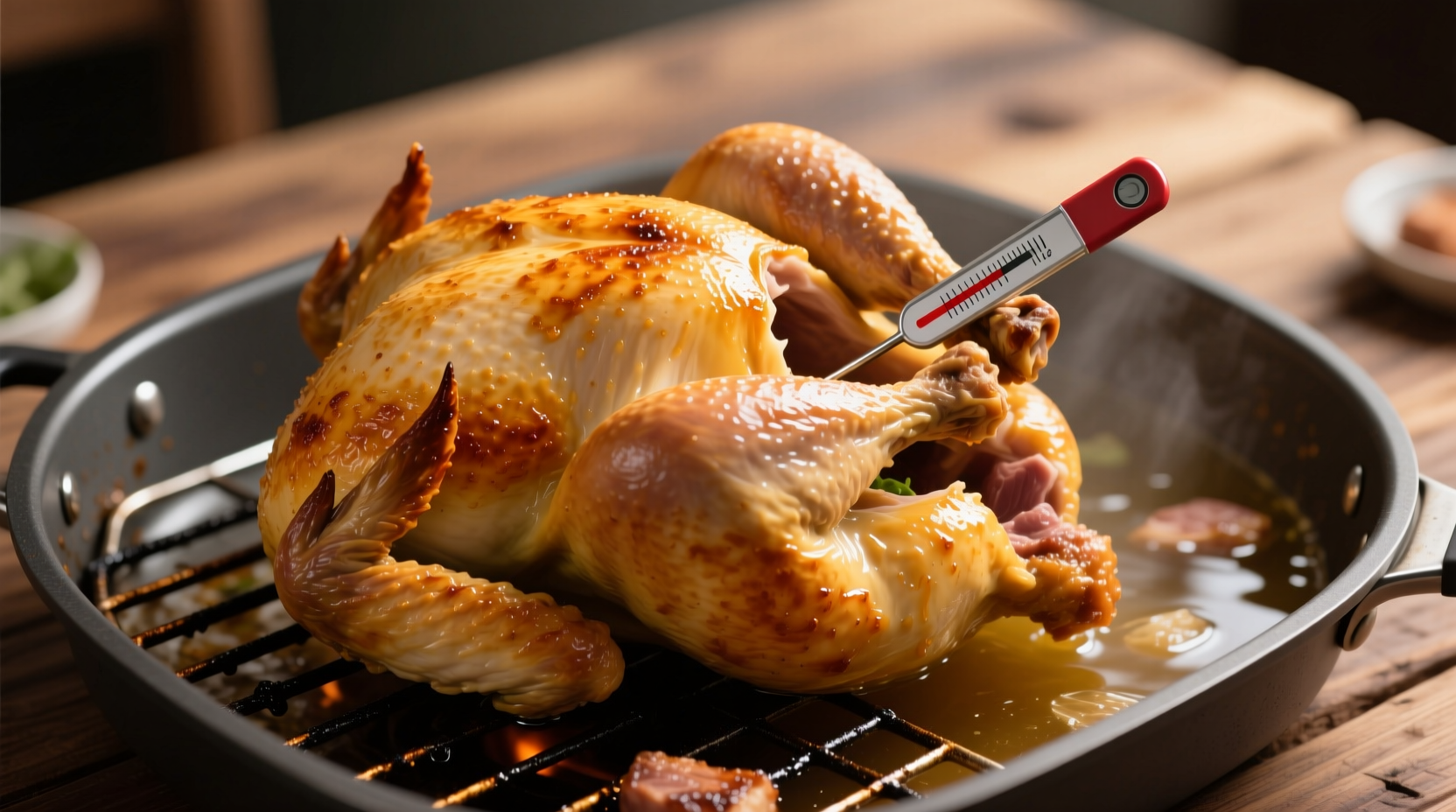Getting the cooking time right for a whole chicken separates a dry disappointment from a juicy centerpiece. As a culinary professional with decades of roasting experience, I've perfected the timing formula that works regardless of your oven or chicken size. This guide delivers precise cooking times based on weight, temperature, and equipment - plus the critical doneness indicators you can't ignore.
Why Cooking Time Varies: Key Factors You Must Consider
That "20 minutes per pound" rule you've heard? It's incomplete without understanding these variables:
- Starting temperature: A chicken straight from the refrigerator needs 15-20% longer than room-temperature poultry
- Oven accuracy: Most home ovens fluctuate ±25°F - use an independent oven thermometer
- Rack position: Middle rack provides even heat circulation for consistent cooking
- Pan type: Dark metal pans cook 10-15% faster than ceramic or glass
| Chicken Weight | 375°F Cooking Time | 400°F Cooking Time | Internal Temp Check Point |
|---|---|---|---|
| 3-4 lbs | 55-75 minutes | 45-60 minutes | 45 minutes |
| 4-5 lbs | 75-100 minutes | 60-80 minutes | 60 minutes |
| 5-6 lbs | 90-120 minutes | 75-100 minutes | 75 minutes |
| 6-7 lbs | 110-140 minutes | 90-120 minutes | 90 minutes |
This cooking time chart reflects verified data from the USDA Food Safety and Inspection Service, which mandates 165°F (74°C) as the minimum safe internal temperature for poultry. Note that carryover cooking will raise the temperature 5-10°F during resting.
Step-by-Step Cooking Process
Preparation Essentials (15 Minutes)
Proper preparation prevents uneven cooking:
- Remove giblets and pat skin completely dry with paper towels
- Truss legs with kitchen twine to maintain shape
- Apply oil or butter mixture under skin for even browning
- Season cavity with aromatics (lemon, garlic, herbs)

Active Cooking Phase (Time Varies)
Follow these critical timing checkpoints:
- First 30 minutes: High heat (425°F) for initial browning
- Middle phase: Reduce to 375°F for even cooking through
- Final 20 minutes: Optional broil for extra-crispy skin
- Temperature check: Insert thermometer into thickest part of thigh (not touching bone)
Resting and Carving (15-20 Minutes)
This often-skipped step makes or breaks your chicken:
- Cover loosely with foil - never airtight (causes steaming)
- Rest on cutting board, not in pan (prevents soggy skin)
- Minimum 15 minutes for birds under 5 lbs, 20+ for larger chickens
- Carve against the grain for maximum juiciness
Avoid These Common Timing Mistakes
Even experienced cooks fall into these traps:
- Mistake: Relying solely on cooking time without temperature verification Solution: Always use an instant-read thermometer - time is just an estimate
- Mistake: Opening oven frequently during cooking Solution: Each opening drops temperature by 25-50°F, adding 5-8 minutes per peek
- Mistake: Not accounting for convection ovens Solution: Reduce standard times by 25% or lower temperature by 25°F
- Mistake: Skipping the resting period Solution: Resting redistributes juices - cutting too soon loses 20% moisture
When to Adjust Standard Cooking Times
These special circumstances require timing modifications:
- Spatchcocked chicken: Cooks 30-40% faster - check at 45 minutes for 4-5 lb bird
- Brined chicken: May cook slightly faster due to increased moisture content
- Convection oven: Reduce time by 25% or lower temperature by 25°F
- High altitude (above 3,000 ft): Increase time by 5-10% due to lower boiling point
Remember that USDA guidelines confirm chicken is safe at 165°F (74°C), but many professional chefs pull at 160°F (71°C) knowing carryover cooking will reach the safe temperature during resting. This technique prevents overcooking while maintaining safety standards.
Pro Tips for Perfect Results Every Time
Implement these professional techniques for restaurant-quality chicken:
- Place chicken breast-side down for first 30 minutes, then flip - creates more even cooking
- Use a remote thermometer with timer alerts to avoid constant checking
- Add 1¼ cups water to roasting pan to prevent drippings from burning
- Rotate pan 180° halfway through cooking for even browning
- Insert thermometer at a 45-degree angle into thigh for most accurate reading
Frequently Asked Questions
How long to cook a 4.5 lb whole chicken at 375°F?
A 4.5 lb chicken needs 85-95 minutes at 375°F. Start checking internal temperature at 75 minutes - it should reach 165°F (74°C) in the thickest part of the thigh without touching bone.
Should I cover whole chicken while roasting?
Never cover during cooking - this creates steam and prevents crispy skin. Only cover loosely with foil during the resting period after removal from oven, and never seal tightly as this also causes steaming.
How do I know when whole chicken is done without thermometer?
Without a thermometer, check by piercing thigh - juices should run clear, not pink. The leg should move freely in its socket, and meat should no longer be rubbery. However, USDA strongly recommends using a thermometer as visual cues alone are unreliable for food safety.
Why is my roasted chicken still pink near bones?
Pink color near bones in fully cooked chicken is normal due to myoglobin reacting with bone marrow. As long as internal temperature reached 165°F (74°C) and juices run clear, it's safe. This occurs more frequently in younger birds with porous bones.
Can I cook frozen whole chicken without thawing?
Yes, but increase cooking time by 50% and check temperature in multiple spots. USDA recommends placing frozen chicken in a roasting pan with 1 inch of liquid to prevent burning. Never use a slow cooker for frozen whole chicken due to uneven cooking risks.











 浙公网安备
33010002000092号
浙公网安备
33010002000092号 浙B2-20120091-4
浙B2-20120091-4